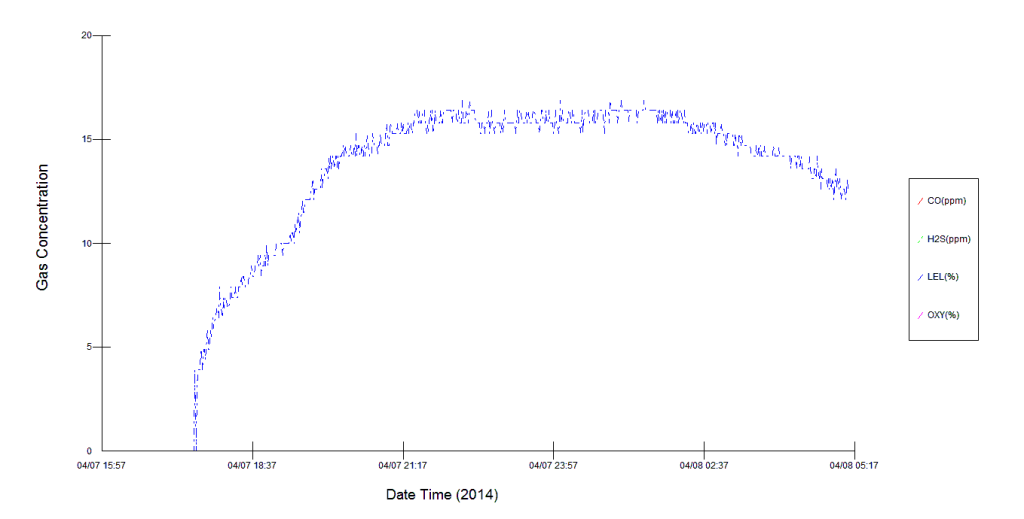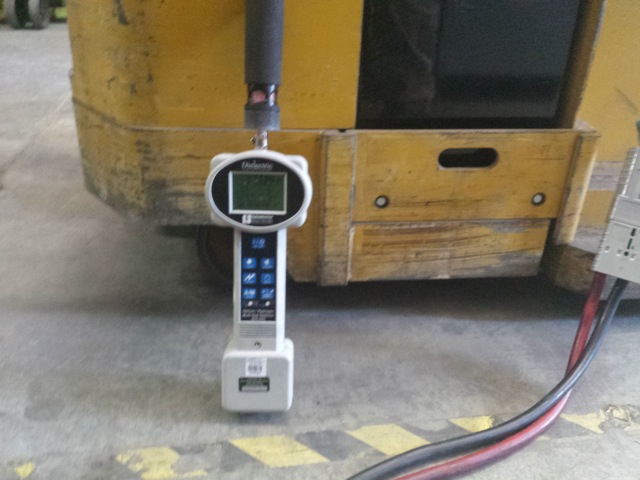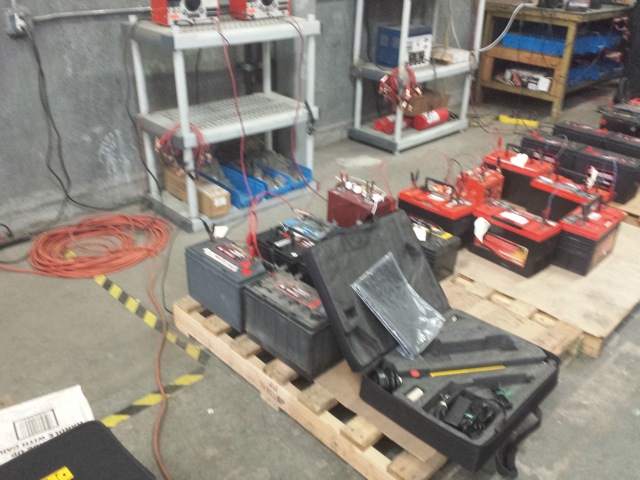Case Study: Hydrogen Gas and False Readings on Carbon Monoxide Alarms
Carbon monoxide alarms are vital pieces of safety equipment used to protect workers and residents from poisonous carbon monoxide gas. But, did you know that hydrogen gas from charging batteries can set off the alarms as well. The post below is from a real client case, and shows how hydrogen gas can trigger these alarms and potentially become an explosive hazard.
How should the gas detection system have been designed?
Buildings that have an area dedicated to the charging of lead-acid batteries should have a safety system in place to detect the combustible levels of hydrogen gas. These sensors are typically required by local code during the construction of a building, but use patterns can change and code requirements can occasionally be overlooked. We run into these issues frequently in spaces where forklifts, golf carts, marine vessels, or other types of vehicles or equipment are stored.
Parts of the gas detection system
Gas detection sensors –
Combustible gas detection sensors that are used for the detection of hydrogen from charging batteries are generally considered catalytic-bead type sensors. These sensors can measure a wide variety of combustible gases, and a hydrogen specific sensor will be tuned and adjusted to detect the LEL (lower explosive limit) of hydrogen gas. It is important to remember that infrared or IR combustible gas sensors can NOT detect hydrogen, and should not be used in areas where gas buildup from battery charging is to be expected.
Notification System or Control Panel –
Based on the size of the area that is to be monitored, projects can be designed to use sensors that notify in one of 3 ways:
- Integrated display and buzzer – these sensors have an internal buzzer and display that will alert of an alarm condition
- Standalone sensor with external notification – these transmitters have an internal relay that will activate based on alarm conditions. Once this relay is activated, it can be wired to control a horn, strobe, horn/strobe, or notify a fire alarm panel
- Sensors connected to control panel – spaces that are large enough to warrant several hydrogen gas sensors often benefit from a control panel. This panel reads the levels from all sensors in the area and can be programmed to activate horns, strobes, communicate with building management systems, or other custom options.
VFD and Fan –
In most situations the combustible gas detectors are not only designed to alert of a flammability hazard from hydrogen buildup, but are also integrated into a mechanical solution. This is typically carried out through the use of exhaust ventilation. The sensor or control panel is connected to a VFD (variable frequency drive) which starts a fan motor. This allows the building to remain very energy efficient and safe. A high-quality system can send a scalable signal based on the level of gas detected and run the fan at a speed that is sufficient to remove the hydrogen gas, but may not need to run at full speed. This prevents wasted electricity and decreases heating and cooling costs for the building.
How do you know if you need a hydrogen detection system?
If your building was in need of a hydrogen gas detection system, you could be alerted in one of several ways.
- Code requirements during initial design
- Violation notice or warning from the local fire marshal or code enforcement
- Safety review or assessment
- New company policy or employee who noted the hazard
- Fire or explosion in the facility
- False alarms or strange readings from your carbon monoxide sensors (Please read the full case study below)
Case Study – Background information:
On Friday the client had installed 2 carbon monoxide alarms in the office portion of the facility. One carbon monoxide alarm was installed in the upper level on one on the lower level. During the weekend both alarms went off; yet no gas-fired furnaces, appliances, or forklifts were in operation. The client had then requested data-logging and investigation to determine the reason that the carbon monoxide alarms were activated. Once hydrogen gas concerns were noted, the meters were left at the facility to serve as safety alarms while the investigation was being performed and were removed completely the following week.
Summary:
Based on the testing performed and outlined below, it is the inspector’s opinion that most likely reason for the alarm activation of the carbon monoxide alarms is a buildup of hydrogen gas due to charging of large quantities of batteries and electric forklifts in an area that is insufficiently ventilated. Cross-sensitivity between carbon monoxide detectors and hydrogen gas is well documented and publicized. Additionally, high levels of hydrogen gas were measured at the charging stations, confirming that this gas is produced in measurable quantities when the chargers are in use.
Recommendations:
Based on the lower-explosive-limit readings (up to approximately 17% LEL) measured in the upper office space during the initial data-logging period, a combustion hazard is likely to be present when charging batteries or forklifts without sufficient ventilation. The charging should be ceased until appropriate ventilation can be achieved. Battery charging stations should be located in well-ventilated areas, as per the manufacturer’s recommendations. This may be achieved in a variety of ways including:
- Installation of a hydrogen-specific gas detection system.
- Installation of large roof-mounted exhaust fans of sufficient size and operational duration.
- Installation of exhaust hoods of sufficient size above all battery charging areas
- Relocation of battery charging areas to outside of the warehouse space
The client should consult with the department of labor and industries and the local fire marshal to determine what types of on-site monitoring will be necessary for this facility. This may include:
- Explosive gas meters
- Commercial quality carbon monoxide alarms
- Additional fire-safety equipment, plans, or training
*This information has been provided for investigative purposes only, and should not be construed as formal plan for resolution of the issues that have been identified.
Data-logging graphs:
The chart below shows a slow elevation in LEL (lower explosive limit) readings from the evening of April 7th through the morning of April 8th. This unit was located in the upper level admin offices. No elevated carbon monoxide levels were seen during this monitoring period, and the LEL measured is assumed to be hydrogen gas generated by the battery charging stations and forklift charging stations

The graph below reflects moderately elevated levels of carbon monoxide throughout the weekend of 4-11-2014 thru 4-14-2014. Based on the additional information gathered during hydrogen gas testing and other periods of data-logging it is assumed that these levels are not actually carbon monoxide, but rather cross-sensitivity of hydrogen gas.
Hydrogen Gas Testing:
To provide additional evidence that hydrogen gas is being generated in significant quantities by the battery charging areas and forklift charging stations a Dielectric MGD-2002 meter calibrated to H2 gas with a sensitivity of 25 ppm was used. The probe was moved above the batteries that were charging on pallets and immediately above the battery compartment in the Yale forklift. The following results were gathered:

|
Location |
Time after start |
Hydrogen Gas |
LEL % |
|
Outdoors |
——————————– |
0 ppm |
0% |
|
2′ above batteries charging on pallet (bay doors open) |
——————————– |
275 ppm |
0% |
|
Far end of warehouse (furthest distance from charging batteries) |
——————————– |
25 ppm |
0% |
|
Yale Forklift Battery Compartment |
0 minutes |
100 ppm |
0% |
|
Yale Forklift Battery Compartment |
2 minutes |
275 ppm |
0% |
|
Yale Forklift Battery Compartment |
8 minutes |
750 ppm |
0% |
|
Yale Forklift Battery Compartment |
10 minutes |
1,000 ppm |
0% |
|
Yale Forklift Battery Compartment |
15 minutes |
1,175 ppm |
0% |
|
Yale Forklift Battery Compartment |
20 minutes |
1,575 ppm |
0% *50 ppm carbon monoxide measured at this time, suggesting cross-sensitivity between H2 and CO |
Final thoughts:
Safety equipment used in residential and commercial spaces is a vital and valuable tool to alert occupants of potentially hazardous conditions. If the alarms on these devices are being activated it may take a professional investigation to get to the root of the issue. As you can see above, what looked like a carbon monoxide concern actually turned out to be a potential explosive hazard. If you have any concerns about the health and safety of the air in your building, please call the experts at Hawk Equipment Services today for more information.

